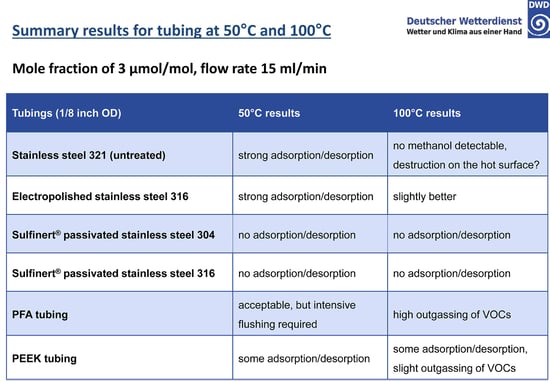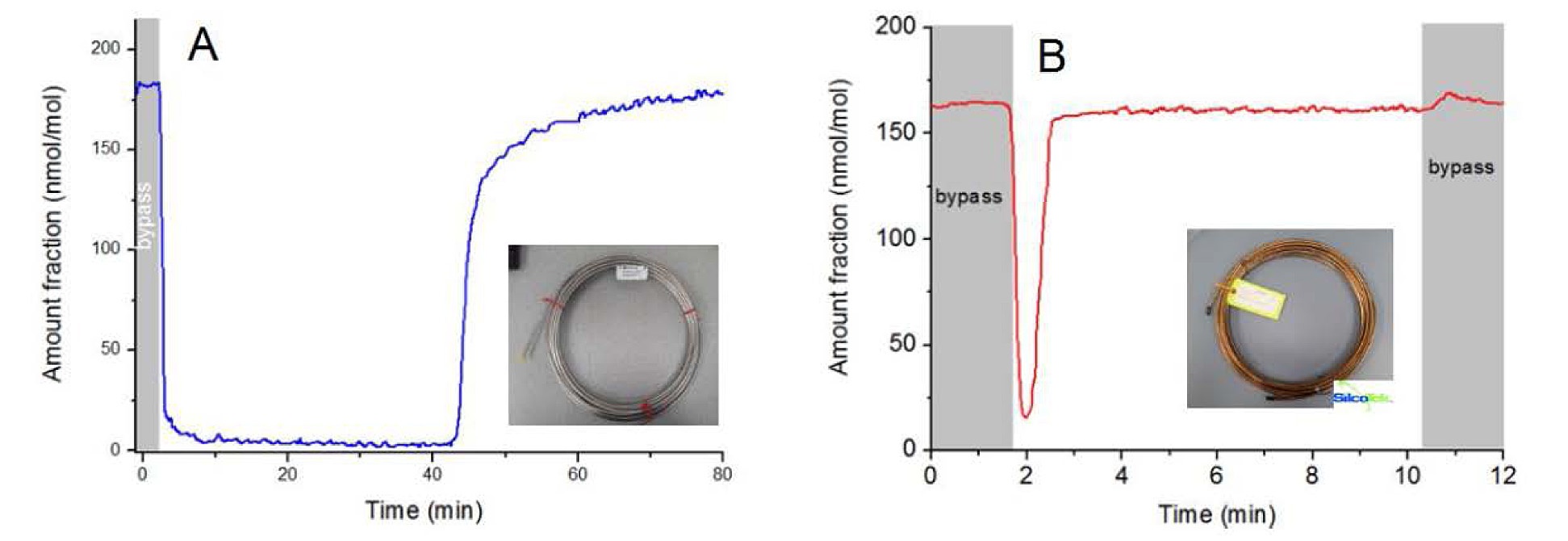 Reduced pollution due to COVID-19 demonstrates the need for improved pollution controls and accurate analysis of trace VOCs. In this blog we discuss how silicon coatings improve VOC analysis and productivity in a variety of applications.
Reduced pollution due to COVID-19 demonstrates the need for improved pollution controls and accurate analysis of trace VOCs. In this blog we discuss how silicon coatings improve VOC analysis and productivity in a variety of applications.
How Coatings Improve Trace VOC Analysis and Productivity
Background:
Monitoring of volatile organic compounds (VOCs) has been a part of the global effort to cut harmful emissions from a variety of industries. Accurate analysis of trace VOCs have become more important as links to health issues, air pollution, and greenhouse gases have been discovered. Beyond the potential harms that VOCs can cause from industrial production, the analysis of VOCs have become of interest for monitoring health and even the productivity of farmers.
|
In this blog post you will learn:
- How coatings like Silcolloy, SilcoNert can be used to improve the sensitivity and reliability of VOC analysis.
- How coatings improved analyzer response, making the use of real time area monitoring of VOCs possible.
- How silicon coatings improve the performance of breath analysis in farming of dairy cows. Yes cows!
|
There have been groups that utilize the detection of VOCs from human breath to possibly detect cancer, swine flu, diabetes, and even Alzheimer’s disease. Recently, a paper was published to analyze the VOC profile of dairy cows as they waited in an area prior to being milked. This blog will discuss what was discovered, and how the Silcolloy coating process made it possible. We'll then discuss how silicon coatings improve the response and analytical sensitivity when sampling VOCs.

Process Improvement Discussion and Data:
The dairy cow study* aimed to investigate if continuous analysis of VOCs in a “normal” field environment would enable the monitoring of metabolic or infectious processes which would improve the productivity of the farm and improve the overall health of the herd. To monitor the herd, the analytical team built a test system which entailed a 6 meter long, 1.4 mm ID heated stainless steel transfer line attached to a wooden beam over a waiting area for cows about to be milked. The transfer line underwent the Silcolloy® coating process to render the stainless steel inert to the VOCs that were collected. This line was attached to a proton transfer reaction – time of flight, VOC detector for real-time trace gas analysis.
The herd that was analyzed consisted of 596 cows broken into 7 groups. These groups were milked twice a day. The waiting area was monitored for VOCs during milking sessions. Results showed there were 27 VOCs that were found to increase while any group of cows were in the waiting area. Some of these VOCs did not result in any predictive measure of the group, but monitoring of certain VOCs allowed scientists to accurately predict a variety of information about that group and herd. Results from testing were able to link the VOC levels to:
- Determine the number of cows in the facility
- Identify cows that recently gave birth
- Slight correlation to milk yield
- Identify links to paratuberculosis
- Identify animals with good food intake and digestive health
Clearly mooving results! OK, I couldn't resist that one.
Why is monitoring cows this important to me? Because this test demonstrates how a fast, real-time test can help manufacturers monitor production, contamination, and develop correlations between data outliers and poor yield, or potentially costly problems with plant systems. In this case farmers were able to improve the health and productivity of the herd. Let's discuss more generic VOC test data and demonstrate how an inert flow path can improve system response.

VOC Test Data**
Selecting inert and durable materials for sampling critical flowpath surfaces can be a key factor in successful analysis. Mr. Stefan (S.T.) Persijn of VSL, Dutch Meterlogical Society, (in conjunction with the German Meterological Office, DWD) presented a comparative study of adsorptive properties of various materials commonly used in VOC analysis.*
Read The VOC Presentation
The study exposed various tube surfaces to methanol at 50 and 100°C and measured adsorption rate of the surfaces. Results show that an inert coating like SilcoNert® coated stainless steel prevented adsorption and reaction with VOCs in critical flow paths. The study summary, below, highlights the comparative results:**

The untreated stainless steel readily adsorbs active compounds with complete loss of methanol. Electropolishing will smooth the surface and reduce overall surface area but adsorption is still significant. PFA and PEEK tubing require careful management of the surface in order to achieve acceptable results. SilcoNert (in this study called by our other trade name, Sulfinert® ) coated stainless steel does not adsorb active compounds because the inert silicon CVD surface bonds to and diffuses into the stainless steel substrate, preventing interaction with reactive sites.
The Key VOCs team completed a major volatile organic compound (VOC) study funded by EURAMET, the Meteorological Observatory Hohenpeissenberg of DWD (the German Meteorological Service) and partnered with the European Metrology Research Programme. Their final report on VOC analysis, "Metrology for VOC Indicators in Air Pollution and Climate Change" is helping to advance the science of trace VOC measurement.**

The team developed test methods to quantify sources of VOC interaction and loss. The project identified suitable materials that prevent adsorption of VOCs and improve measurement techniques. The team also developed sensor based measurement systems for key VOCs in air. The Key VOC team chose SilcoTek® coatings for their study because we offer the expertise, support, and inertness needed to provide an inert sample flow path for highly reliable trace VOC analysis.
Methanol Comparison
The VOC team then compared 10 meter lengths of SilcoNert 2000 coated and uncoated stainless steel tubing (below). The team passed a 180 umol/mol methanol mixture through a bypass (grey areas), then switched to the test tubing. They measured the time to achieve baseline concentration for each tube. The SilcoNert coated tube took less than a minute to stabilize (graph B) compared to over 40 minutes for the stainless steel tube (graph A). The comparison demonstrates the severe adsorption of trace methanol on stainless steel flow path surfaces and highlights potential delays in response that can lead to significant data reliability issues when conducting trace VOC analysis.**

Overall the least methanol adsorption was observed for polymer sampling lines (like PTFE, and FEP) but porosity/permeability, high temperature stability and durability issues limit their effectiveness in the field. It was found that at elevated temperatures (50 to 100°C) polymer tubing emitted trace compounds which can lead to unwanted or spurious signal peaks. The SilcoNert coating is stable to 450°C and emits no trace compounds during heating. The study stated:
"The adsorption by most polymers such as PTFE and FEP is extremely low, while for uncoated metals it is very high. Coated stainless steel with SilcoNert-2000 (also known as Sulfinert) are the preferred choice, as they also have the benefit of being robust non-permeating materials."
Conclusion:
Real-time changes in trace VOC profiles can be monitored for a herd of cows in a field scenario. This monitoring can provide information about the number of cows in the group, the herd health, and show early signs of infectious diseases. This method is promising as it is non-invasive, fast, and relatively simple and is food for thought when applying real time VOC analysis in process and food production applications.
Have a question about VOC analysis? Contact our Technical Service Experts, or follow us on LinkedIn.

Reference:
*Gierschner, P., Kuntzel, A., Reinhold, P., Kohler, H., Schubert, J.K., Miekisch, W. Journal of Breath Research. 2019. 13, 046006.
**Images and data courtesy of The Dutch Metrology Institute (VSL) and the German Meteorological Office (DWD) presented at the Key VOC joint project April 21st 2016, in Paris, France.







